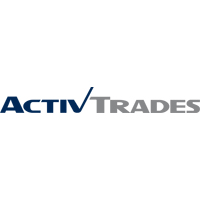Unlike savings, which are largely covered by the Financial Services Compensation Scheme, investments carry risk. In return for this risk, people can access better returns.

Peer-to-peer lending is an investment in which you lend money to borrowers via a specialist online platform. RateSetter is one of the most established platforms in this sector, having lent more than £2.5bn to date, without any individual investor losing a penny. However, RateSetter itself always makes it clear that it cannot provide a guarantee that this track record will continue into the future.
So what are the risks of investing through a peer-to-peer platform?
Risk of a borrower defaulting
If you’re lending money to someone, the most obvious risk is that the borrower won’t pay you back. RateSetter expects a default rate of just over 3% on its current active loans (correct as of 5th June 2018). This is on the basis that following every loan application received, it conducts robust credit checks, affordability checks and fraud checks before making a decision on whether to approve it.
However, RateSetter also has a trick up its sleeve… the Provision Fund. This acts as a buffer which protects investors against borrowers that can’t repay their loan.
The Provision Fund is made up of payments received from borrowers, based on RateSetter’s assessment of their creditworthiness. If a borrower misses a payment, the Fund kicks in and makes the payment to the investor. This has been so successful to date that RateSetter investors have earned more than £100 million in interest without anybody losing a penny of capital or interest – although as already mentioned, this isn’t a guarantee for the future.
As the Provision Fund automatically spreads investors’ risk across all RateSetter’s active loans – almost 300,000 of them – this means investors diversify their risk on the platform without lifting a finger.
Access risk
Another thing to consider as an investor is whether you can access your money if you need it. RateSetter investments can be for terms of up to 5 years at time, but you might want to access your money sooner than that. As with all investments, being able to take your money out early is always subject to liquidity. That means that you can always get your money back early from RateSetter as long as it can find another investor to take your place on the loans you are matched to. There is a small fee for early access to money invested in RateSetter’s 1 year and 5 year markets, but no fee for access to the Rolling market.
Of course, RateSetter strives to have a great track record of facilitating early access to invested money, and to date, few investors have had to wait to do so. However, it’s worth bearing in mind that your money could be tied up for the full investment term if your loans can’t be transferred to another investor.
Platform risk
The third risk is that RateSetter itself ceases trading. However, if this ever were to happen, all loan contracts would continue to be legally valid and borrowers would have to continue to pay back their loans to investors. To manage this process, RateSetter has a backup service provider, who would manage the processing of borrower repayments to investors.
Financial Regulations also specify that investment platforms must keep their clients’ money (i.e. your money) separate from the business’ money (i.e. RateSetter’s money), providing an additional element of protection.
So is it risky?
You should always keep in mind that peer-to-peer lending is an investment – RateSetter’s aim is to help investors access healthy returns, which does not come with a promise of safety – it’s not a savings account for rainy day cash.
But with appropriate measures in place to help investors manage the risks, peer-to-peer lending is now a valid investment option that is well worth consideration.

 Hot Features
Hot Features













